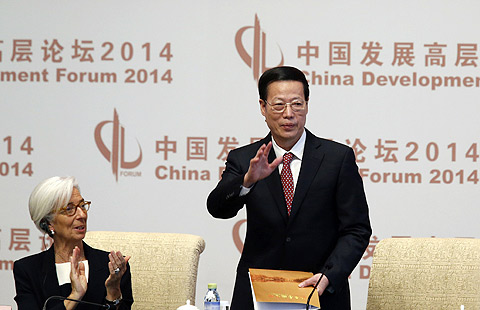Beijing among most polluted areas
Updated: 2014-03-26 08:04
By Zheng Xin (China Daily)
|
|||||||||||
Q+A | Ministry of environmental protection
Q: What are the major conclusions from the annual air quality report?
A: The Beijing-Tianjin-Hebei region, East China's Yangtze River Delta and South China's Pearl River Delta are still regions hard-hit by air pollution, and North China has witnessed especially severe pollution.
What are the major causes of the persistent pollution?
The slow pace of industrial structure transformation and upgrading, with many provinces and regions still relying on high energy consumption and heavily polluting industries, is the main cause of air pollution.
The rapid pace of urbanization, which brings along with it an increasing number of automobiles, together with the lack of wind also contribute to the hazy days.
How does the ministry evaluate the new air quality index?
It's a milestone in China's environmental protection history, and marks the shift from pollution control to environmental quality management and risk prevention, while providing scientific guidance for the public.
How can you ensure the objectivity of monitoring data?
The ministry will transmit real-time data to the government and release it to the public. We have also set up a monitoring data supervision system to ensure its preciseness.
Sometimes the public thinks the data isn't accurate. What causes people to doubt the figures?
The current AQI figure is based on the pollutant intensity over the last 24 hours, and the pollution might shift dramatically within a few hours, which leads to the disparity.
What's the ministry's plan for air quality monitoring this year?
While ensuring all of the monitoring stations keep providing reliable figures to the public, the ministry aims to cover all prefecture-level cities with air quality monitoring stations as soon as possible. We will also enhance the pollution forecast capacity while coming up with an objective source analysis of the pollutants to better cope with the smog.
- Zheng Xin
Related Stories
China issues smog alert 2014-03-25 23:42
Smog in Beijing expected to stick around 2014-03-25 08:31
Beijing experiencing new round of smog 2014-03-24 14:35
Hebei looks overseas for smog control 2014-03-24 08:26
Smog in Beijing expected to stick around 2014-03-25 08:31
Today's Top News
Xi pledges to bolster nuclear security
Kremlin 'ready' to work with G7
President takes detour on state visit to France
US mudslide death toll climbs to 14, 176 missing
Courier, customer brawl in Chongqing
Much interest in importing 'Cathay' tulip
Tibet Airlines to open four new routes
Beijing among most polluted areas
Hot Topics
Lunar probe , China growth forecasts, Emission rules get tougher, China seen through 'colored lens', International board,
Editor's Picks

|

|

|

|

|

|





